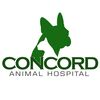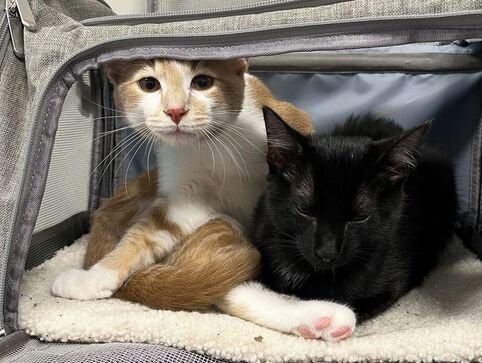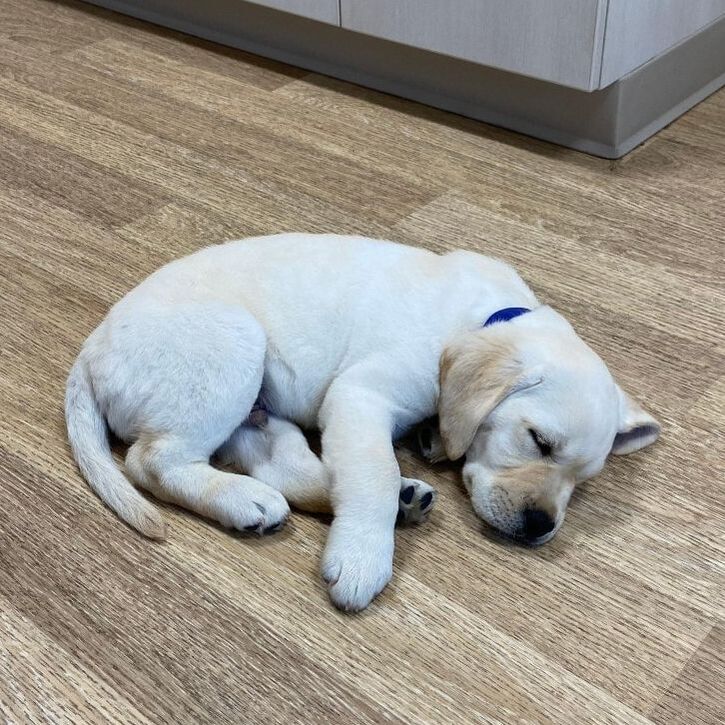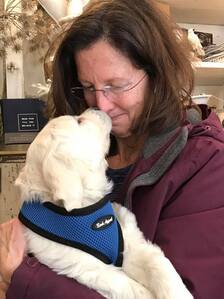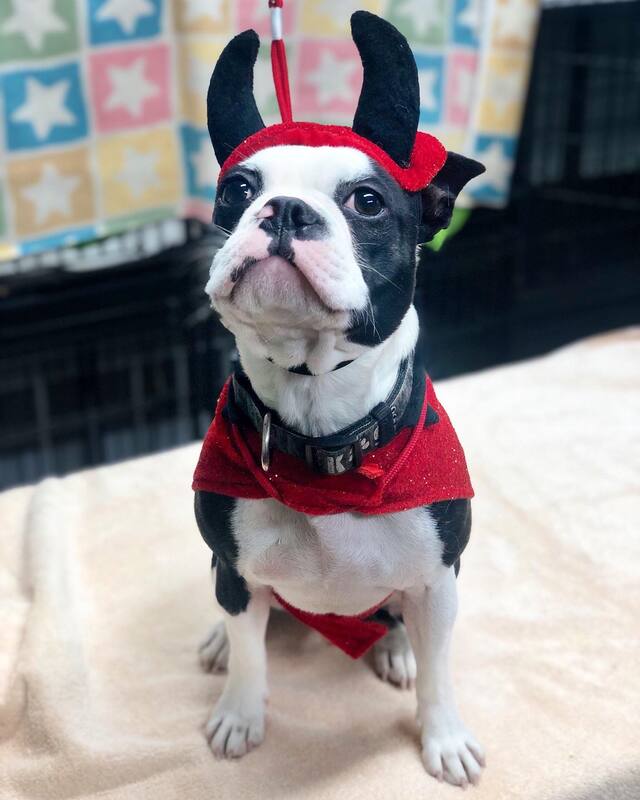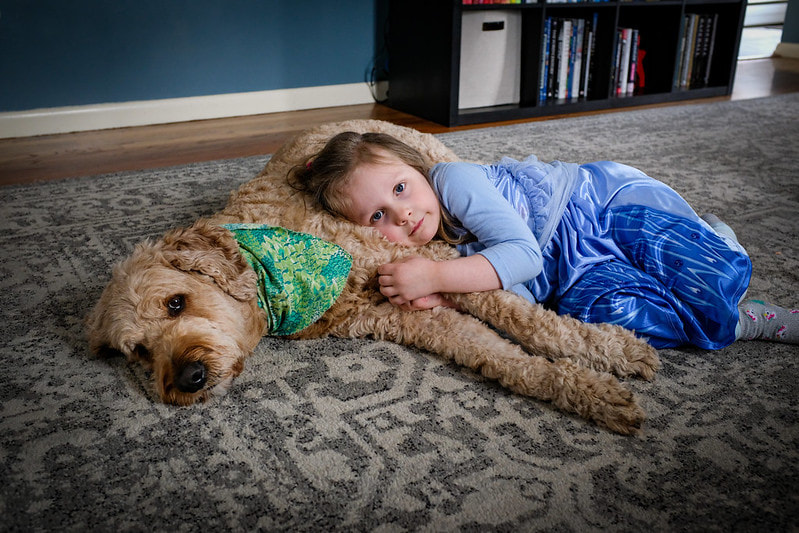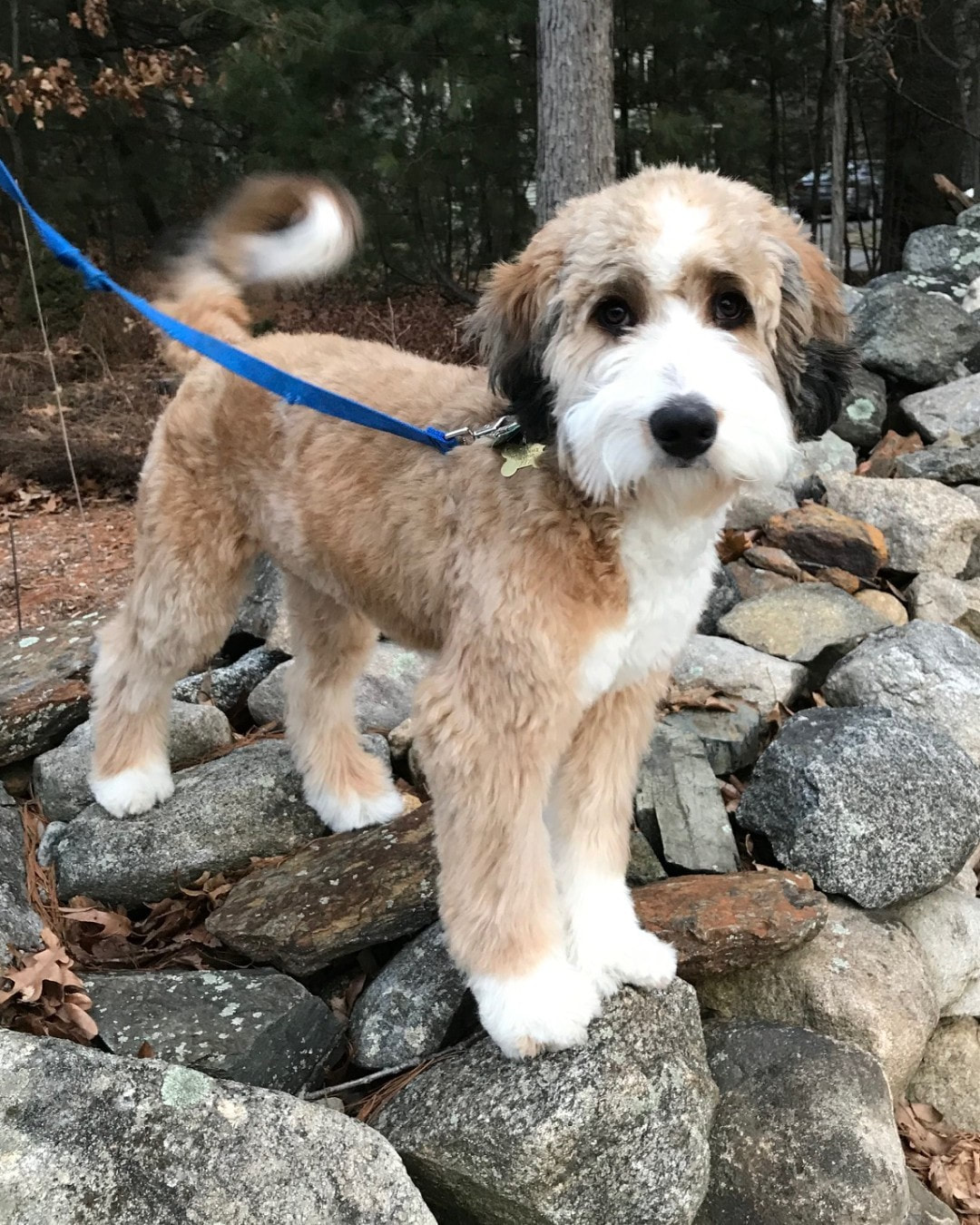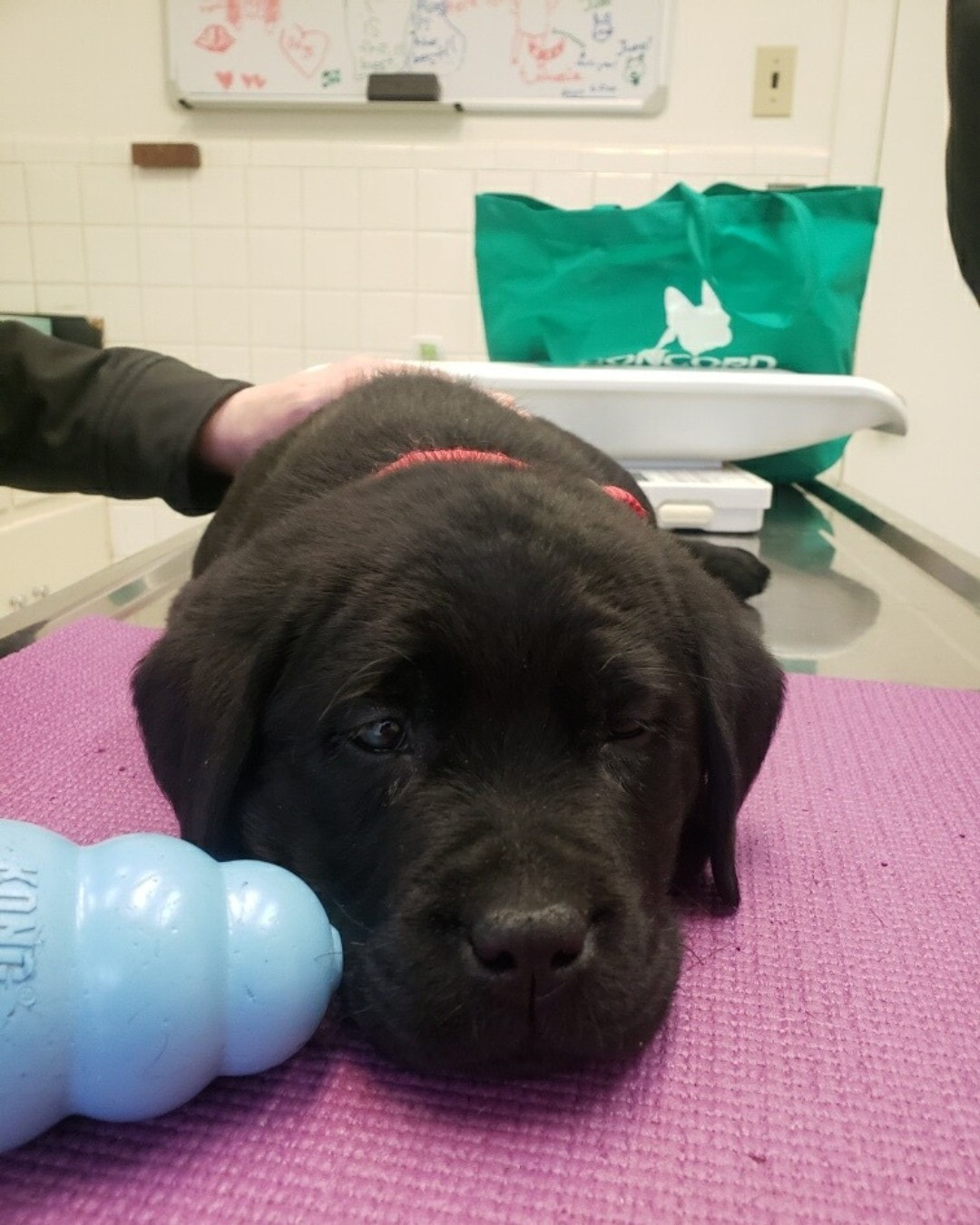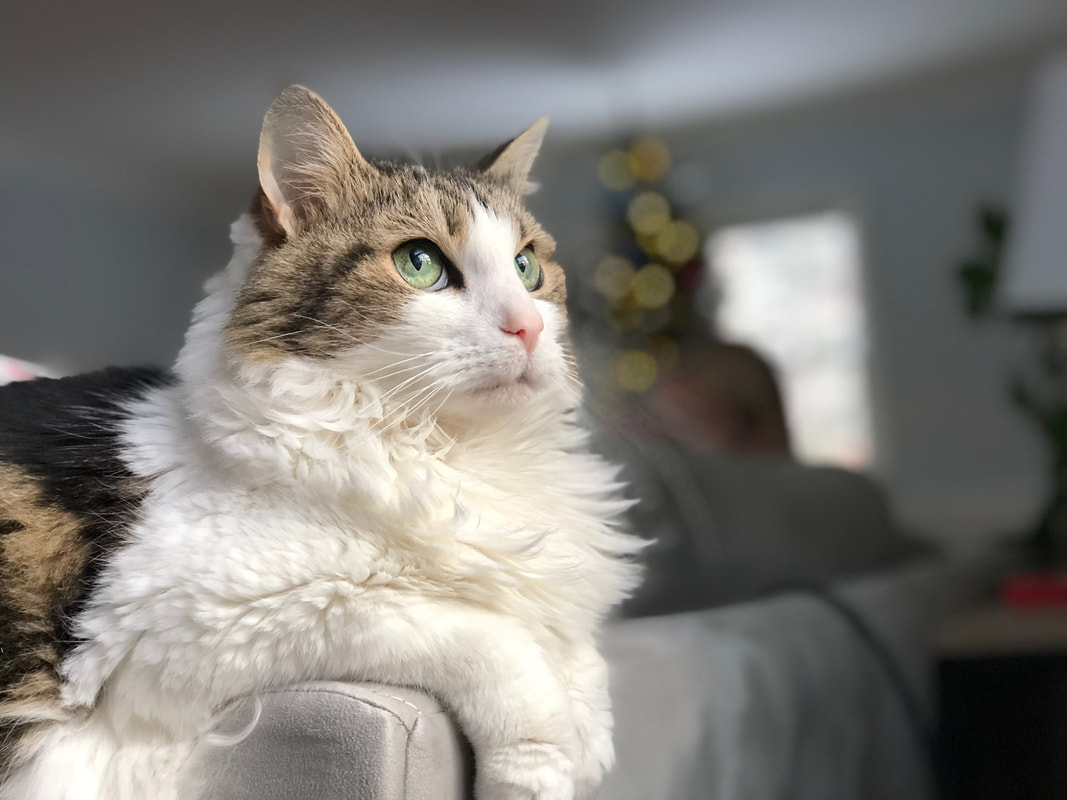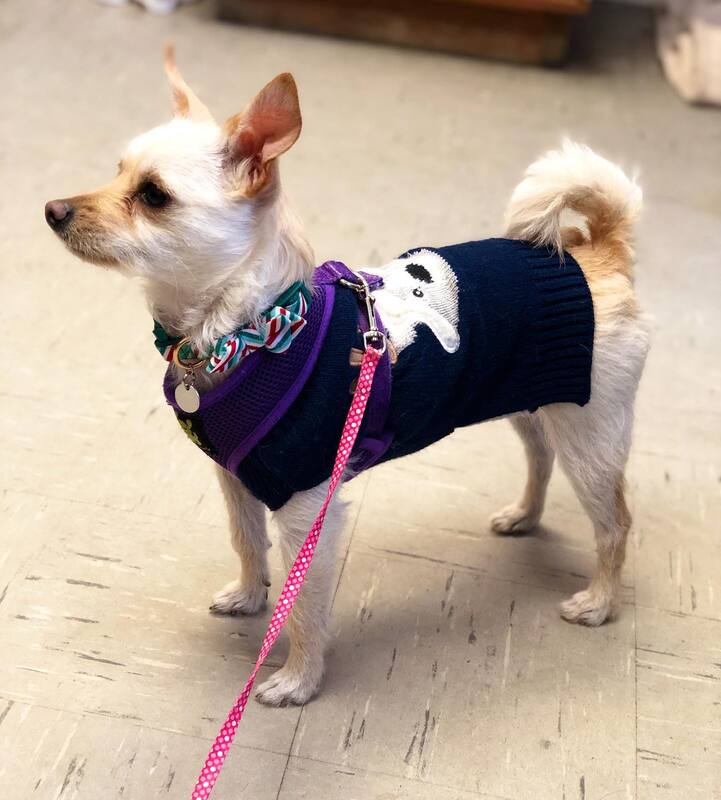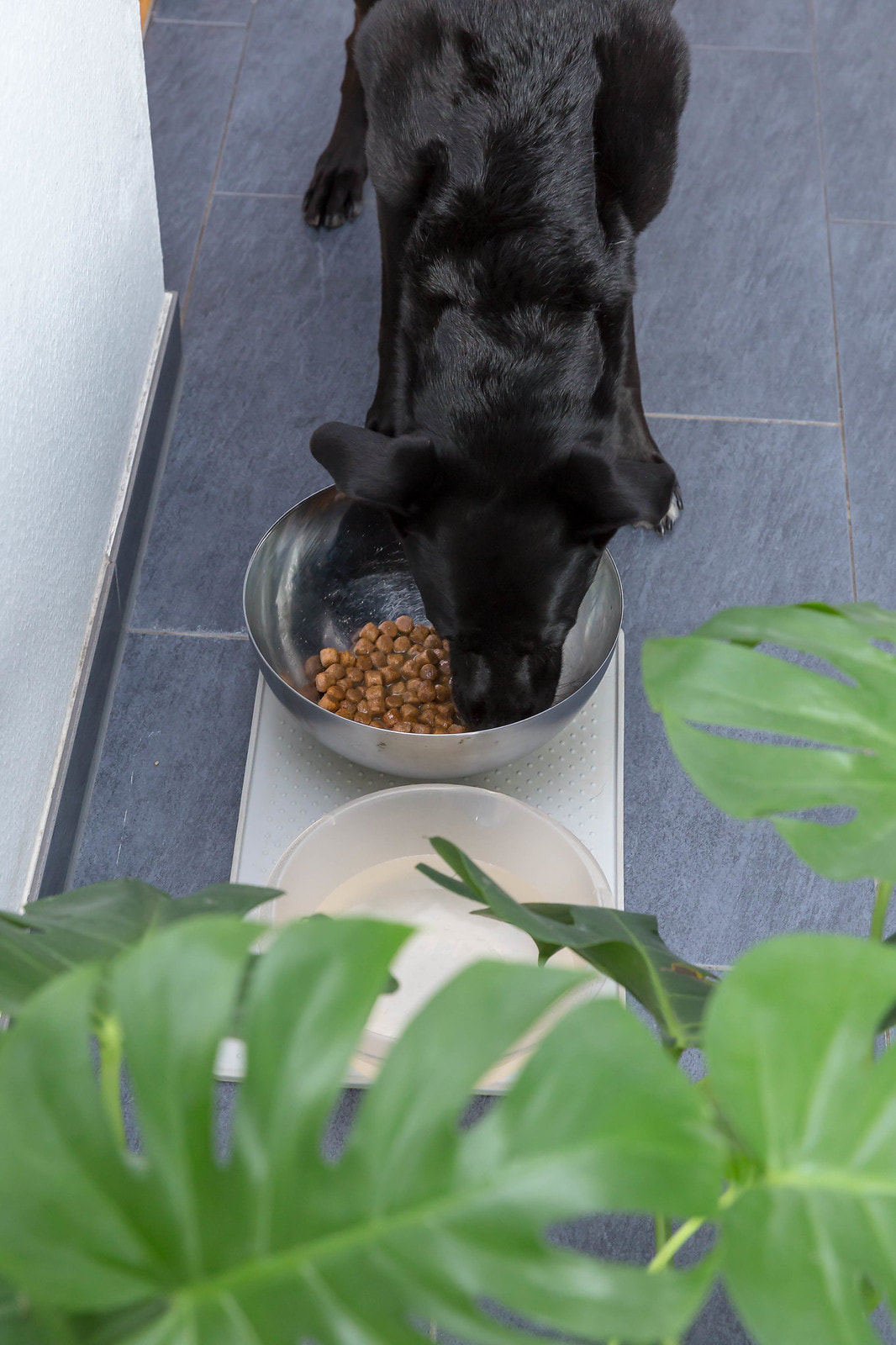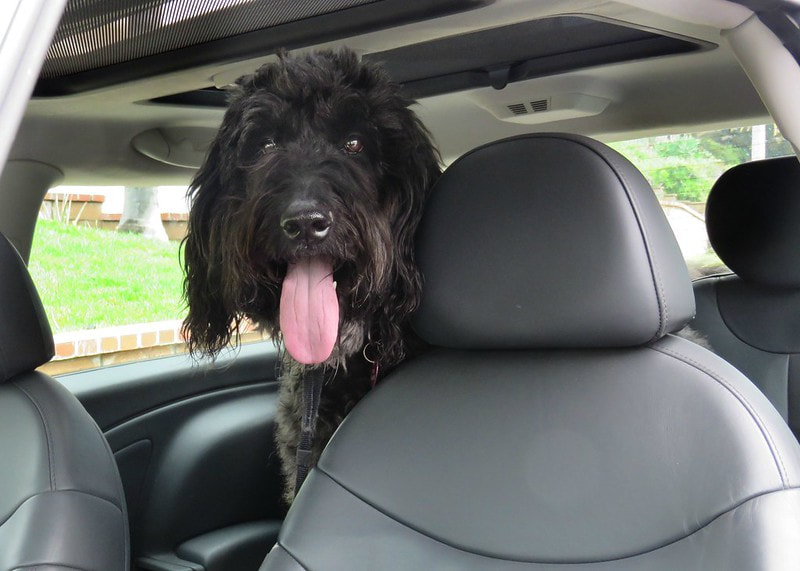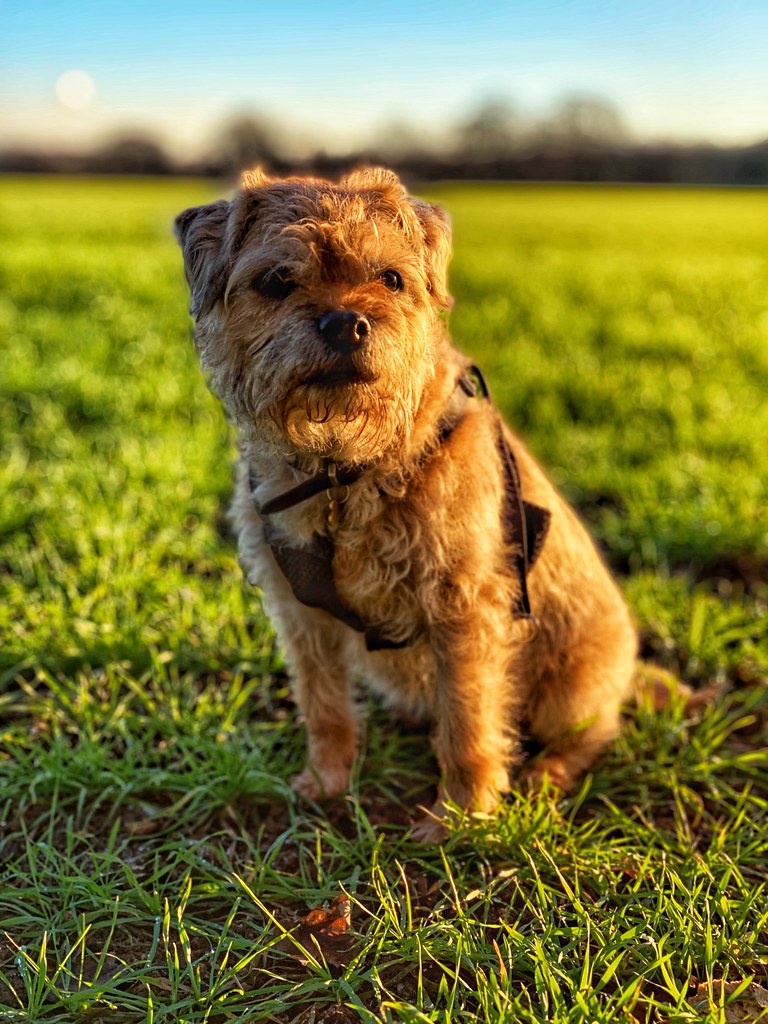|
Travel! Remember that? It’s been a minute since most of us have been jet setting off to other countries. But as things settle down and borders open up, a lot of us have been bit by that travel bug. International travel is already a complicated beast and it only gets harder if you’re planning to bring your pets with you. Every country has different requirements and it can quickly turn into a maze of paperwork and appointments and restrictions. But fear not! Concord Animal Hospital has two USDA accredited veterinarians who are here to help with your international travel needs. Today we’re sitting down with Dr. Katherine Aubert, to cover her top tips for international travel. Start planning early! Like, really early. The sooner the better. Every country has its own requirements for international travel, and between processing times, required tests and vaccinations, and waiting periods, we’ll want as much lead time as possible. Dr. Aubert recommends giving a call as soon as you start making travel plans so that we’ll have a head start on sorting through requirements and preparing necessary documents. You should also let us know as soon as you have flights booked, since many countries require certain things to be done within a very short window before your arrival. “For example,” Dr. Aubert says, “most countries require an exam by a USDA accredited veterinarian within ten days of your arrival. If you start making plans last minute, it can be hard to find the time to make these appointments happen.” Keep your records organized! If you’re preparing for a relaxing vacation then paperwork is probably the last thing you want to worry about, but a little organization now will save you a lot of hassle later! Different countries have different forms that need to be filled out and different records that need to be provided, but one of the most common is a rabies certificate. For many countries you will need an original copy of your pet’s rabies certificate, including their microchip number, signed by the administering veterinarian in blue ink. Some countries may require additional vaccinations, parasite treatment, or other treatments or procedures. So basically, the more documentation you can come with, the better! 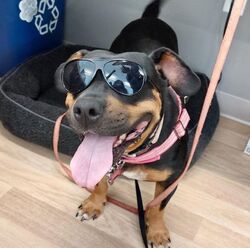 Going somewhere sunny Endy? Going somewhere sunny Endy? Double-check that microchip! Many countries require that your pet have an ISO compliant microchip for identification abroad. Not all microchips meet ISO standards; the ones we use at Concord Animal Hospital do, so if your pet was microchipped here you’ll be all set! If your pet was microchipped at another clinic you should check with them to see if the microchip is ISO compliant. If it is not compliant, we’ll typically want to administer a new microchip that is. Leave time for titers! Some countries (such as most European Union members and many Caribbean islands) will require a rabies titer prior to arrival. A titer is a special test that checks the antibody levels present in your pet’s blood to ensure they’re truly protected against a given disease. And while that sounds pretty straight forward, there is a catch; “Rabies titers have to be sent out to special reference laboratories, and typically take 4-6 weeks to process,” Dr. Aubert cautions. So to reiterate point one, start planning early! The last thing you want is for your entire trip to be ruined because a lab didn’t come back in time.  Certify your health! Most countries will require an International Health Certificate, signed by a USDA accredited veterinarian (like Dr. Aubert or Dr. Hardie!), after an exam conducted no more than ten days prior to your arrival in your destination country. “Some countries have longer exam periods or don’t require a certificate at all,” Dr. Aubert says, “but these are the exceptions rather than the rule. After your exam we’ll submit the necessary paperwork to the USDA offices in New York. The approval process can take several days, and then the USDA will overnight you a hard copy of your endorsed certificate, which you’ll need to bring with you while traveling.” So, at the risk of sounding like a broken record, call us early! The sooner you start making plans and getting appointments set up, the more likely we’ll be to get everything arranged in time. Consider giving your pet a vacation of their own! While we all want our pets to join us in our beautiful vacation destinations, travel can be stressful for the little ones. Unfamiliar surroundings, hectic airports, and long flights in cooped up carriers can quickly leave your pet needing a vacation from their vacation. “If you’re only going to be abroad for a week or two,” Dr. Aubert says, “consider leaving your pet with a sitter, a family friend, or a boarding facility. They might be happier for it.” Give us a call! Every country is different! That’s a beautiful sentiment about the diversity of our big wide world, but it’s also a factual statement about international travel requirements. To check the requirements for your destination you can visit the USDA’s Pet Travel Website, which offers a country by country breakdown of precisely what you’ll need. But of course, we’re always happy to help as well! If there’s one thing we hope you’ll take away from this article it’s, you guessed it, call us early! The sooner we can start planning, the more we'll be able to ensure your vacation goes off with less hitches and more scritches.
Vaccinated, Unvaccinated, or Not Currently Vaccinated? Before we get into all the different rules and regulations, we need to define some terms. Vaccinated and unvaccinated are pretty self-explanatory, but you might be scratching your head over the difference between unvaccinated and not currently vaccinated (I even got them backwards while I was writing this paragraph). Fortunately it’s actually pretty simple: an animal who currently has an up-to-date rabies vaccine is considered vaccinated. An animal who has previously received a now out-of-date rabies vaccination is considered not currently vaccinated (remember that at CAH your dog’s first rabies vaccination will last for one year, and all future boosters will last for three years - we only administer one-year vaccinations for cats). An animal who has never received a rabies vaccination, or received their first vaccination less than 28 days before the bite occurred, is considered unvaccinated. Easy, right? Pet not up to date on their vaccines? Let's fix that asap! Call to book a vaccine appointment today. Scraps at the Dog Park We’ll start with what to do if a domestic animal bites another domestic animal. Maybe your pup got a little too close to an unfriendly stranger at the dog park, or maybe playtime with a housemate got a little too rough. If your pet bites or is bitten by a domestic animal belonging to another person, get their information, and give them yours. If your pet is bitten by another domestic animal who is identifiable, the biting animal is quarantined within the owner’s home for 10 days. If the other animal is not identifiable, your poor pet ends up in quarantine for 45 days! They don’t want that, and we’re sure you don’t either. If your animal happens to be the biter they’ll have to go into a 10 day quarantine. This means they should be kept inside your home, should not have any contact with other people or animals, and should only be taken out on-leash to use the bathroom. The word quarantine sounds scary (and might bring back some unpleasant memories of early 2020), but fear not! While dog bites and quarantines do need to be reported to the town, you aren’t in any trouble and no punitive measures are taken. You won’t be fined, your dog won’t be taken away, and you have nothing else to worry about. The only purpose of these quarantines is to prevent the possible spread of rabies while your dog is monitored for symptoms. 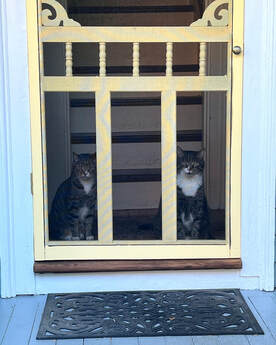 Tussles in the Woods If your pet gets bitten or scratched by a wild animal while out for a walk, or ends up with a wound of unknown origin, the rules are a bit different (and unfortunately a bit stricter). If your pet is vaccinated or not currently vaccinated and they get scraped up in the woods, you should bring them in as soon as possible to have their rabies vaccine boostered - this is the case even if your pet is currently up-to-date. After this your pet will need to go into a 45 day quarantine to monitor for rabies symptoms. If your pet is happy and healthy at the end of this period, no further action is taken. If your pet is bitten or scratched by a wild animal or receives a wound of unknown origin and they’re unvaccinated they should also be vaccinated as soon as possible, after which they’ll have to go into a four month quarantine. If your unvaccinated pet had contact with a wild animal that is confirmed to have been rabid by a state laboratory, they’ll need to spend the first 3 months of this period in full isolation at an approved animal hospital, kennel, or livestock quarantine facility. Fortunately this is easily avoided by vaccinating your pet before it becomes necessary!
In Summary… So there you have it! Hopefully this post has answered your questions, and has helped to make the prospect of an animal bite a little less scary. We were mostly focused on the protocols and the paperwork, but that does leave off one of the most important pieces of advice: if your pet ends up with a bite or a scratch from any source, you should always have them checked out. We can clean up the wound, make sure it’s healing properly, help prevent infection, and even give your pet some pain meds if they need them. As always, we try to cover what we can in these blogs, but we’re sure we didn’t get to everything! If you’ve got any other questions we’re always happy to chat, and if you do ever find yourself dealing with animal bite just give us a call and we’ll be glad to help you through it- but fingers crossed you won’t have to make that call any time soon! In our continued efforts to provide the highest standard in medical care for your pets, we are thrilled to announce the addition of laparoscopic surgery to Concord Animal Hospital's services.
 Petal three days after her LOVE Spay Petal three days after her LOVE Spay Laparoscopy has been used in human medicine for the past 25 years and the team at Concord Animal Hospital is excited to help drive its adoption in veterinary medicine. “A laparoscopic procedure offers so many benefits for pets and owners,” says CAH owner and Veterinarian Dr. Wilson. “The incisions are significantly smaller, there is less tissue handling, and less time under anesthesia. All of this results in a faster and safer procedure for pets. The recovery time is days instead of weeks and your pet will be in far less pain.” Dr. Wilson adds, “yes, that does mean just a couple of days in a cone with exercise restriction instead of two weeks. This is a tremendous benefit, especially for puppy owners!” Laparoscopy is not necessary for all surgical procedures. “Laparoscopy is a great alternative for procedures where the team needs to access deeper into the body cavity. These procedures require large incisions and handling of vessels and tissue with a traditional surgery,” notes Dr. Wilson. “A LOVE Spay, short for a laparoscopic ovariectomy, is a great spay alternative for large breed dogs, overweight pets, and for pets who have gone through a heat cycle.” With some exceptions, your veterinarian will recommend a traditional surgery for neuters of male pets instead of a laparoscopic surgery. Let’s face it: “surgery” is a scary word. The idea of bringing your pet in for a surgical procedure is daunting, and even a routine procedure like a spay or a neuter can be stressful if you’ve never been through it before. That’s why we’ve sat down with CAH’s own Dr. Kaitlin Rondeau in order to demystify the process and explain what to expect leading up to, on the day of, and in the days after your pet’s procedure.  Dr. Kaitlin Rondeau helps to demystify your pet's surgical procedure! Dr. Kaitlin Rondeau helps to demystify your pet's surgical procedure! The months before Your pet’s veterinarian will work with you to determine when a surgery might be beneficial to your pet. Spays and neuters are fairly routine and typically happen between 6-12 months. Depending on our vet’s findings during their checkups they may also suggest dental procedures, such as cleanings or extractions, or mass removals to get rid of any odd lumps and bumps. If your pet has never seen us before, we’ll want to book an initial checkup with a doctor prior to scheduling a surgery. From there we’ll also want to perform some tests to make sure your pet is healthy enough to undergo anesthesia. “With any patient we want to perform bloodwork to check liver and kidney function, since these are the organs responsible for metabolizing anesthetic drugs,” says Dr. Rondeau. “If your pet has other medical concerns we may also recommend further testing, such as an ultrasound.” At these preoperative visits we’ll also prescribe dogs a medication called Cerenia, which is an anti-nausea medication used to prevent vomiting under anesthesia. Cats do not require Cerenia. The night before surgery, your pet should have dinner no later than 6 pm, and the Cerenia should be given that evening. Water is okay including on the morning of the procedure, but your pet should not be fed overnight or the morning of the procedure.  The day-of When you arrive the morning of your pet’s surgery, our receptionists or technicians will go over paperwork and ask a number of intake questions. They’ll confirm that your pet was fasted and received any necessary medications, and will also ask about any symptoms of illness your pet may have shown recently. “If your pet has recently experienced symptoms like vomiting, diarrhea, lethargy, disorientation, or loss of appetite, that’s important to know,” Dr. Rondeau says. “Surgery can be taxing on your pet’s body, so we don’t want to move ahead if they’re already feeling under the weather.” While the procedures we perform here are very low-risk, our staff will also ask whether you would like CPR to be administered in the event of an emergency. We’ll always make an effort to contact you before doing anything outside of the scope of what we’ve discussed, but we want to get your permission to perform CPR in advance so we can take action immediately if necessary. Once our staff is finished with intake questions our technicians will bring your pet inside, and you can go home and try to relax! The attending veterinarian will call you after the procedure (usually early afternoon) to let you know how everything went, cover discharge instructions, and give you a pickup time. In the case of some procedures such as dentals, the doctor may also call you to discuss a plan after x-rays or an exam are performed. “Sometimes radiographs and sedated exams will reveal additional pathology that we weren’t able to notice during a normal exam,” Dr. Rondeau explains. “For example, we may discover a need for more dental extractions than we originally realized.” In cases like these, our doctor will give you a call to go over a plan before proceeding with any additional work. When you come to pick up your pet one of our technicians will go over discharge instructions one more time, and will answer any questions you might have before sending you on your way. But we like to keep in touch, so we’ll call you within the next day or two to make sure your pet’s recovering well. 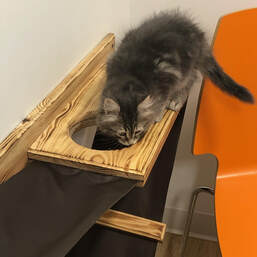 The weeks after Your pet may be a little loopy after coming up from anesthesia, so it’s important to make sure they’re supervised for the next 24 hours. That evening you can offer a small amount of food and water, about half of what your pet usually receives. If your pet had a dental procedure you may see a small amount of blood in their food or water dish - don’t panic, this is normal! Regular eating and drinking can resume the next day. Your pet will also be sent home with medication to help alleviate pain and limit their activity if they tend to be especially energetic. Typically you can start these medications the first evening your pet’s home, but precise instruction will be given at the time of discharge. For our spay, neuter, and mass removal surgery patients, you’ll want to heavily limit exercise for the next five days. “Basically, we want to make sure there’s no risk of your pet reopening their incision site,” Dr. Rondeau explains. “Keep them on a leash during walks, don’t let them go up or down stairs, and keep them away from other pets.” On the sixth day you can gradually start to increase your pet’s activity level, but you still want to take it easy during this time. The full healing process takes 14 days, so avoid long walks, play with other pets, bathing, or swimming until this has passed. Keep checking your pet’s incision site daily for swelling, redness, discharge, or missing sutures. If your pet had a dental procedure, don’t offer them any hard treats or chew toys during this time, but you won’t need to restrict their activity after the first day post-procedure. If you observe any facial swelling, bad odor, drooling, or mouth sensitivity let us know. If you think something you see doesn’t look right, give us a call at 978-369-3503, or send a photo to [email protected].
 Not that bad, actually. But we’re getting there and we're here to help you prep your pet! The air’s turning cold, the days are growing shorter, and winter is on the horizon. But as much as we all love sledding, snowball fights, and warm mugs of hot chocolate, winter also brings with it some unique petcare challenges that aren’t present during the warmer months. Keep your winter more delightful than frightful by following these quick tips for winter weather safety! Frosty Fleas (and Ticks, and Heartworm): If there’s one upside to winter temperatures it’s that all those nasty warm-weather parasites have died off, right? Wrong! Ticks can be active in temperatures as low as 40 degrees, while fleas can get all the way down to 33 degrees. And while New England winters are colder than this on average, it’s not uncommon to end up with a few unseasonably warm days in the middle of the coldest months. If you’re thinking “Wow, what beautiful weather!”, then unfortunately so are those pesky parasites. That’s why we strongly recommend continuing flea, tick, and heartworm prevention year-round, no matter how cold it is. Wipe those paws: The same salts that prevent us from slipping on icy sidewalks and injuring (or embarrassing) ourselves can be rough on a dog’s paws. Wiping your dog’s paws down after a walk can prevent irritation to their paw pads, and will also keep them from licking off residue that can be harmful or toxic. Depending on how sensitive your dog’s paws tend to be, you can also consider using booties or paw balm to help protect them during your winter outings. There’s one piece of advice we always give (and this one’s good year-round): to give us a call whenever you’re unsure! If you’ve got winter-weather questions, think somethings not right with your pet, or want to schedule a visit or stock up on essentials, give us a call!  Mind your mercury: You know, like they used to put in thermometers? Just like humans, dogs and cats can be sensitive to the cold, and can suffer from frostbite or hypothermia. Limit their outdoor time once temperatures hit freezing, and consider putting a sweater on puppies or dogs with short coats. Don’t leave them alone in your car either; a freezing car can be just as dangerous as a hot one! Get ready to get snowed in: There’s a big difference between “Snow day” and “Snow week.” Hope for the best but plan for the worst by making an emergency kit ahead of time, so you’ll be prepared in the case of an extended power outage or a prolonged snow-in. We recommend keeping at least three days of your pets’ food, water, and medication, as well as some special toys and treats to help keep them relaxed while they’re cooped up. And be sure to check out mass.gov’s Winter Storm Safety Tips for general advice about keeping your home and human family members safe as well!  Check your car: The inside of your car’s hood might not sound like a cozy resting place to you, but to your cat a warm, enclosed space like that is prime napping real-estate. Before starting your car make sure any cats in your house are accounted for, and check your hood or make some noise to flush out any feline stowaways. Chip ice and chip pets: If you’ve sniffed one snowflake, you’ve sniffed them all. A thick blanket of freshly-fallen snow looks beautiful to us, but it can also cover up familiar scents and make it harder for a wandering pet to find their way back home. Prevent your dogs from getting lost by keeping them on a leash during winter walks, and increase your odds of reuniting with a lost dog or cat by microchipping them and giving them a well-fitting collar with up to date contact information. For some additional winter petcare advice, check out our previous blog on the same topic. Now bundle up, light a fire, and let’s make this winter a great one!  It’s getting to be that time of year again! There’s a chill in the air, decorations are popping up on your neighbor’s lawns, and your kids are probably deep in contemplation over which superhero, princess, or scary monster they want to be this year. In just a few short weeks your house will become a treasure trove of seasonal snacks and sweets. But while your kids will enjoy digging into their sugary hauls (and you might enjoy sneaking a few pieces for yourself, we won’t tell), Halloween candy can actually prove very scary for your pets! We’ve all heard that chocolate is bad for dogs, but there are plenty of other lesser-known pet toxins that have slapped on a costume and snuck their way into your home. To help keep your pets safe this Halloween season, here’s a list of a few of the biggest dangers to watch out for! 
Uh-oh, my pet got into something! An ounce of prevention is worth a pound of cure, but we know it’s not always that simple. If your pet got into something they shouldn’t have, call us or an emergency service immediately. Depending on what your pet ate, how much, and how long ago, we may recommend monitoring for symptoms, inducing vomiting, or coming in for supportive care. 
So what can I feed my pet? We get it. While it’s important to keep your pet safe, you don’t want them to feel left out on a night like Halloween! If you want your dog to be able to join you in your post-Trick-or-Treat feast you can offer them a few high-value treats. You can make a game out of it with your cat or dog with an interactive food puzzle!
Halloween should be a fun night, and the last place you want to spend it is an emergency room. If you’re looking for more ways to keep your pets safe check out last year’s Halloween blog post for a few general tips on keeping your night fun-scary, instead of actual-scary. And with all that said stay safe, and Happy Halloween! 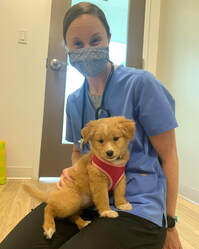 Hurricane season in New England lasts from June to the end of November, but emergencies also come in less predictable forms throughout the year, such as house fires and tornadoes. When disaster strikes, your pets are almost completely dependent on you to survive. Follow Concord Animal Hospital's 5-point emergency checklist to keep your pets safe during an emergency. 
 Molly helping up front after her vaccines! Molly helping up front after her vaccines! For new puppy owners, the number of vaccines available for dogs can feel overwhelming. Concord Animal Hospital is here to help! Here are answers to a few common questions: What is a vaccine? A vaccine exposes the immune system to inactive or incomplete disease-causing agents to train the immune system to quickly and effectively respond when exposed to the real deal. It is a safe way to protect your dog from some scary, often life-threatening diseases. Are vaccines safe? There are isolated cases of allergic reactions, but these are rarely life threatening when treated appropriately. We generally limit the number of vaccines given at once – your Veterinarian will discuss the safest vaccine schedule for your puppy. Call us or a 24-hour emergency hospital immediately if you observe hives, swelling around the face or vomiting. 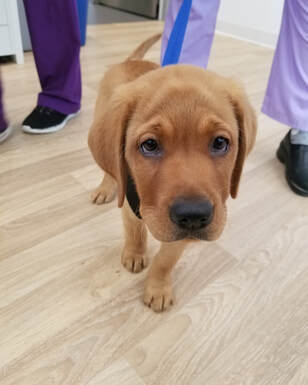 Ernie listening intently to his Vet Ernie listening intently to his Vet What are the core vaccines that CAH Vets recommend? There are two vaccines that we strongly recommend for your dog:
Important to know: if your dog is bitten or bites another animal, get the contact information of the other animal’s owner if possible and call us immediately. We will go over state regulations around rabies booster vaccines and quarantine. What other vaccines do CAH Vets recommend? The following are non-core vaccines. We will work with you to assess your pet’s risk of contracting one of these diseases and decide together if your pet should receive the following vaccines.
Concord Animal Hospital's tips to keep your pet safe from ticks and tick-borne illnesses 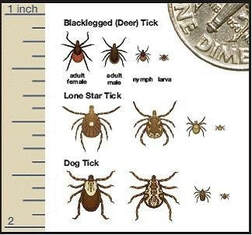 Our clients are calling daily with questions and concerns about ticks - we are here to help! Here are answers to the four top ticks questions local pet owners are asking our medical team. What Kind of Ticks Are in Our Area? There are three main types of ticks in the Concord, Massachusetts area:
While people follow precautions for keeping themselves safe from ticks such as using bug spray and wearing long pants and socks, it’s important to do the same for our four-legged friends, too. 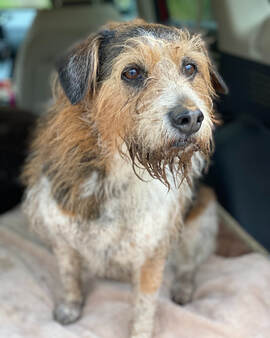 Hopefully Knuckles is just bringing home a little dirt, no yucky ticks! Hopefully Knuckles is just bringing home a little dirt, no yucky ticks! How Can I Keep My Dog Safe from Tick-Borne Diseases? Our veterinarians at Concord Animal Hospital strongly recommend using tick preventatives such as Bravecto or Simparica/Simparica Trio. While these chewable tablets are very effective at preventing tick-borne illnesses, they do not repel ticks. Instead they kill ticks several hours AFTER the tick bites your pet. For this reason, some clients double-up with a repellent collar in addition to a chewable tick preventative. Talk to one of our veterinarians to determine the best product for your pet given their health history, potential exposure to ticks and lifestyle. Should I use a tick preventative year-round? Yes, yes, and double yes! Frost and freezing temps DO NOT kill ticks. Ticks are dormant but come back to life in only 40 degrees - a high often achieved even in the coldest months. Our veterinarians see plenty of dogs with tick-borne illnesses throughout the winter. Our vets also suggest taking added precautions such keeping your dogs out of long grass or and away from undergrowth. These areas are where dogs like to sniff and explore, but they are also prime hangouts for ticks. After a walk, the American Kennel Association recommends checking some spots you might forget to look, such as inside ears and between toes, to make sure your pet didn’t bring any ticks home with them.
What Do I Do If I Find a Tick on My Dog?
If you find a tick on your dog, remove it as soon as possible! If it hasn’t attached itself yet, there is no risk of tick-borne illness for your pet. If it has attached, grasp the tick with a pair of tweezers as close to the site of attachment as you can and pull straight back. If you have found an attached tick, particularly one that is engorged, the MSPCA advises noting the date and time to discuss with your veterinarian. Watching for the following symptoms, but be aware that symptoms may not appear until several weeks or even months after exposure:
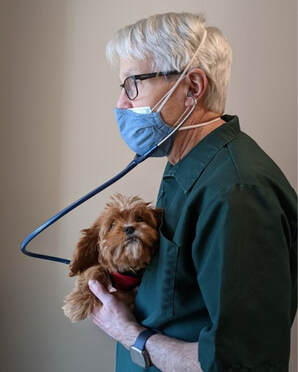 Dr. Hardie giving a listen to Gigi's little heart Dr. Hardie giving a listen to Gigi's little heart Vaccines are an important piece of your pet’s preventative health care. A vaccine exposes your dog or cat’s immune system to an inactive or incomplete disease-causing agents to train the immune system to quickly and effectively respond when exposed to the real disease. It’s a safe way to protect your pet from some scary, often life-threatening diseases such as distemper and rabies. The benefits of vaccines typically far outweigh the risks of a vaccine reaction. There are isolated cases of pets having allergic reactions to vaccines, but these reactions are rarely life threatening when treated appropriately. At CAH, we want pet owners to know what a vaccine reaction looks like and when a reaction requires medical attention. “Seeing your pet have a vaccine reaction can be frightening,” says CAH veterinarian Dr. Bradford Hardie. “It’s important to understand what reactions are mild and short-lived and which are medical emergencies.” Here are the six things all pet owners should know about vaccines reactions: 

Proper Paws' Judy Bernard on Training Tips for Pandemic Puppy Owners (part 3 of 3)
While the idea of returning to our pre-pandemic lives might be exciting for us humans, we must warn you that the road will be rocky for many pets. This will be particularly true for puppies who have only known a world where they are surrounded by their beloved humans. We humans have been home all the time: not going into work, not vacationing, not visiting friends & family, and not going out to dinner. As we receive our vaccines and begin to venture out, our puppies might have a problem. Fortunately, Judy has thoughts on how we can prep our puppies and dogs for the changes coming their way. 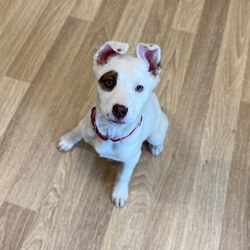 Stella by Starlight and puppies like her have been enjoying lots of time with their humans Stella by Starlight and puppies like her have been enjoying lots of time with their humans Katherine: How do you expect puppies to react as their owners begin to venture out of the house without them? In some cases, for the first time in these puppies’ lives? Judy: Separation issues are bound to happen in a time where we are all working from home and our dogs have gotten used to us being here. Let’s face it: we are all pack animals and having our pack around us all the time is very comforting. That said, reality will return and our puppies and dogs will need to get used to us NOT being home 24/7. The key to making sure they are as unaffected by this changes as possible is to start practicing now. Katherine: How should we practice leaving our puppies and dogs alone? Judy: Here are some quick thoughts on how to make your dog’s transition back to ‘normalcy’ as uneventful as possible. Set up a regular routine where you leave the house without your dog. Try to do this as close to your expected normal time as possible and do it every day. Start with short trips away, like to check your mailbox, and extend the trips as your dog gains comfort and confidence. Set your dog up for success as you train them to be alone. Make sure the dog’s physical and mental needs are taken care of before you leave. Feed and exercise the dog and make sure they have eliminated. When you leave, make sure your pet is in a puppy/dog proof environment. A crate is preferred for young puppies who may eliminate, chew things, or otherwise get into trouble. You may need to revisit crate training prior to starting this routine if your puppy/dog isn’t comfortable being in the crate. Give them a stuffed Kong or other safe high value treat to work on while you are gone. Make leaving and coming as much of a non-event as possible and do it multiple times a day. The more practice the dog gets with short, happy absences the better.  Suzie getting mentally prepared for a little more alone time Suzie getting mentally prepared for a little more alone time Katherine: What can owners do if their dog doesn’t react well to being left along? Judy: If the dog reacts poorly, stop and re-evaluate your plan. You may have to start with smaller steps, like leaving the room but not the house to begin with. It may help to use an automated food delivery device to associate your leaving with a steady flow of food. If your dog will not eat or engage with a high value treat (like a stuffed Kong) in your absence this is a sign of heightened stress and anxiety. In the case of extreme anxiety, fear, or stress you may need to consult with your veterinarian and/or a behavior professional for a behavior modification plan. Signs of extreme anxiety/stress include:
Part 2 in a 3 part series with Proper Paw's Judy Bernard on socializing puppies during COVID-19
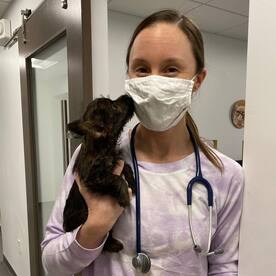 Tiffany sneaking in a kiss while in to see Dr. Rondeau Tiffany sneaking in a kiss while in to see Dr. Rondeau Katherine: What are you recommending to new puppy owners to get their pups ready to see the vet without their owners? Judy: I recommend spending time each day getting your pet used to the things they will see and experience while at the vet, AND associating those things with high value treats. This will help lessen the stress and anxiety they will experience when they do visit the vet. Katherine: What are some of the activities you find work well? Judy: Here are some things you can do to help your pet with future vet visits:
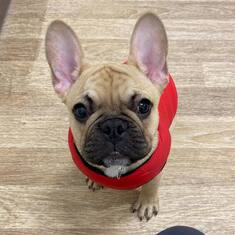 Puppy Rhody was was happy to play during his vet visit! Puppy Rhody was was happy to play during his vet visit!
Katherine: Any watch outs new owners should be aware of? Judy: Remember these exercises should be a fun game for your dog, if at any point the dog begins to show signs of stress or anxiety (tail tucked, head lowered, growling, backing away), STOP, jolly things up, play tug or fetch (whatever your dog likes), and FEED those high value treats! If the fear persists, call a dog training professional familiar with cooperative care training. Vet visits should be fun, if we play pretend vet at home we get our puppy/dog familiar with all the things they will see while they are at the vet. By associating all of those pretend vet actions with high value food reinforcers we are setting the puppy/dog up to have as stress free experience as possible. Part 1 in a 3 part series with Proper Paw's Judy Bernard on socializing puppies during COVID-19  Adorable puppies Boba & Mochi with CAH Tech Eunice Adorable puppies Boba & Mochi with CAH Tech Eunice A happy effect of the pandemic is what we in the biz are calling pandemic puppies. With the activities that take us humans away from home on hold – commutes, long work and school days, travel for work and fun, nights out – many of us have decided that this is a great time to bring home a new four-legged friend. We have more time to train them and lots of time to enjoy them. For many families, a new pet is a bright spot, a way to make this complicated time special. As much as this is a fabulous time to bring home a new pet, the pandemic-enforced isolation presents specific challenges for owners of new puppies, but we’re here to help! Concord Animal Hospital’s Katherine Wilson spoke with Judy Bernard, owner of Proper Paws Dog Training right here in Concord, Certified Professional Dog Trainer-Knowledge Assessed, and member Association of Professional Dog Trainers to get her thoughts on how new dog owners can face the challenges the pandemic presents. The result is a three part series for new puppy owners:
A dog that is not exposed to a variety of stimuli during this critical period is at risk of developing behavior problems later on."  Bao in for his first visit with us Bao in for his first visit with us Katherine: For our new puppy owners, can you explain what is puppy socialization? Judy: First let me tell you what puppy socialization IS NOT. Puppy socialization is not having your new puppy play with every dog in the neighborhood. It’s not making your dog walk up to noisy garbage trucks or school buses that frighten them. It’s also not having every person that walks by them on the sidewalk stop and pet them! Even during a pandemic, we can socialize our dogs quite well while still maintaining appropriate social distancing. In some cases, it makes it EASIER! Socialization is exposing your new puppy to as many new and novel experiences as you can in a way that is positive and enjoyable for the puppy. Puppies go through a critical developmental period from about 3-12 weeks where they are most amenable to experiencing new things. This period is called the Primary and Secondary Socialization period. This period is tied to the development of social patterns and provides a foundation for many adult dog behaviors.1 In short, a dog that is not exposed to a variety of stimuli during this critical period is at risk of developing behavior problems later on. 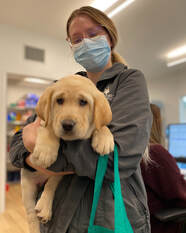 CAH Tech Ali giving Swizzy a lift CAH Tech Ali giving Swizzy a lift Katherine: How should new puppy owners socialize them? Judy: It’s really important to carefully expose your 7-14 week old puppy to lots of novel stimuli. This means taking the dog for rides in the car, walks on all different substrates, climbing in out and of boxes, eating out of different dishes, seeing different animals (cats, horses, chickens), and generally experiencing every possible place or thing you might expect your dog to go and see when they are grown. Keep your trips short and enjoyable! Make sure you have plenty of yummy treats with you, if the puppy seems worried – feed them. While puppy play dates with other puppies of similar age, size and temperament are a PART of socialization, socialization doesn’t begin and end with puppy playdates. Katherine: What else should new puppy owners know about socializing their dog? Judy: Socialization also does not begin at 7 weeks or end at 12 weeks. Breeders can do a lot to help a dog develop resilience in their adulthood with early handling, brief interludes of separation from the pack, taking the puppies on rides in the car, introducing them to crates, etc.2 Older puppies that are rescued can also benefit from CAREFUL exposure to novel stimuli. Older puppies tend to be more fearful but this doesn’t mean we should stop socializing. It does mean we need to be careful to make sure the experiences your dog is getting are positive. Make sure you have an ample supply of yummy treats on hand and use them to help your dog associate the new things they are seeing with good treats. Never force your dog to approach something it fears, no matter how silly it may seem. Instead, let your dog choose the distance they want to keep and help them associate that very scary garbage can, vending machine or snowman with something good by feeding them every time they see that scary thing!
Check back in February for part 2 in our Training Tips for Pandemic Puppy Owners: Helping your dog with vet visits during a pandemic.
It's the time of year to write our New Year's resolutions. This year lets get our pets in on the act! 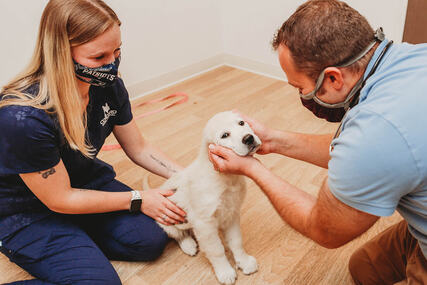 How COVID-19 is impacting pet health Pet obesity was already on the rise before the pandemic, with over half of all cats and dogs in the U.S. overweight or obese. This problem has intensified along with the pandemic according to a survey from Hill's Pet Nutrition, conducted in partnership with Kelton Global. One third of pet parents with an overweight pet say their pet became overweight since the start of the pandemic. Many of us are home all day, continually giving pets treats and exercising less. All of this comfort and indulgence can put your pet at risk for serious health issues. According to CBS News, common obesity-related conditions for dogs and cats include arthritis, bladder and urinary tract disease, diabetes, as well as excess stress on the heart and joints. How can you tell if your pet is overweight? As Dr. Wilson, a veterinarian at Concord Animal Hospital (CAH), explains, a good indicator of whether your pet might be packing some extra pounds is to take a close look at your cat or dog. “If you see their ribs, they are too skinny. If you can’t see their ribs and you can’t feel them with your hands when you rub the side of their chest, your pet may be overweight.” How can help your pet maintain a healthy weight? You can dramatically improve your pet’s quality of life and life expectancy—not to mention, avoid additional veterinary bills—when you help your cat or dog maintain a healthy weight. We can help you do this in 2021! Dr. Wilson has five tips for pet owners: Concord Animal Hospital’s 5 New Year's resolutions to keep your pet’s weight in check: 
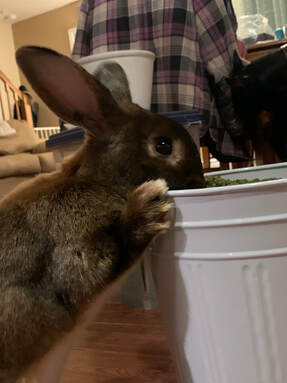
Wishing you all a very healthy and happy 2021!
You've all heard the jokes: COVID-19 keeping pet owners home-bound is a dog's dream come true, a cat's worst nightmare. While our canine and feline friends may disagree on whether having us home all day is a good thing, a quieter Halloween may be a silver lining of this pandemic that they can both enjoy!
If you do plan to answer the door with your dog, keep your pooch on a leash. This will prevent a nervous dog from becoming aggressive with a trick-or-treater or unexpectedly bolting out the door. If your pet does escape from the house, slip a leash, or somehow become lost, having an ID tag worn on their collar and a microchip dramatically increases the odds that you’ll be reunited with your pet. Make sure your pet’s ID tag has up-to-date contact information and that your microchip manufacturer has your current address and phone number. Though the terrifying “ding dong” of Halloween might be missing for most pets this year, there are a few other dangers pet owners need to be aware of. Here are Concord Animal Hospital’s top three safety tips to keep your pet healthy & happy this Halloween.
PET EAT SOMETHING QUESTIONABLE? Call us at 978-369-3503 immediately to determine if your pet needs medical attention. If this happens when we are closed, visit our Emergency Services & Resources page for a list of 24-hour hospitals or the Poison Control Center.
According to the AVMA, a study of almost 8,000 stray pets at shelters showed that dogs with microchips were returned to their owners at twice the rate as those without microchips. The chances increase even more dramatically for cats: microchipped cats were returned to their owners almost 40% of the time compared to less than 2% of cats without microchips. When microchipped pets weren't returned to their owners, it was often due to missing or incorrect owner information in the microchip registry database – it's critical to keep your information updated for microchips to work. Does CAH recommend microchipping patients? Absolutely! A microchip is a safe and cost-effective way to dramatically increase the chances of recovering your pet. Most countries also require a microchip for jet-setting pets - check the USDA website and contact our office for questions about microchipping and other requirements for international pet travel. How is a microchip implanted? A microchip is a small electronic chip about the size of a grain of rice that is implanted under the skin with a hypodermic needle. "Despite being given with a larger needle, chip implantation is similar to giving your pet a vaccine and can be done during a routine visit to your vet," says Dr. Stephen Wilson. No anesthesia or surgery is required, though implantation can be done while your pet is under anesthesia for a spay, neuter, dental or other procedure. Is a microchip safe? Yes! Implantation is about as painful as a typical injection and adverse reactions to implanted microchips are extremely rare. A microchip can be implanted during a routine vet appointment. How does a microchip work? Microchips are activated by a scanner's radio waves - there is no battery in the microchip. A veterinarian or shelter employee will scan your pet for a microchip. If a chip is found, the chip manufacturer is contacted with the chip ID number and they will reach out to you - your information is not provided to the person who found your pet! If your contact information is missing or incorrect, your chances of getting your pet take a nose dive, so make sure to keep your information current with your microchip manufacturer! What are the limitations of a microchip? A microchip should not replace an identification tag. Typically, lost pets are found within a few hours by a good Samaritan or local dog officer and an ID tag is a quick and easy way for someone to coordinate the return of your little wanderer. A microchip doesn't replace a rabies tag, which is necessary for your pet's safety and required by Uncle Sam. A microchip is also not a tracking device - the chip is only activated when a veterinarian or other professional scans your pet. Sign up for our monthly newsletter!
New data indicates that SARS-CoV-2, the coronavirus that causes COVID-19, can infect cats, though it still doesn’t appear to infect dogs. It’s still unclear whether cats can spread the virus to people, so we urge caution but not alarm. With the first case of an animal in the US testing positive for SARS-CoV-2, the coronavirus that causes COVID-19, pet owners are understandably concerned. Two days ago a tiger in a zoo in New York City was confirmed to be infected with COVID-19. Outside of the US there have been a handful of reported SARS-CoV-2 positive pets. The American Veterinary Medical Association (AVMA) lists two dogs in Hong Kong, one cat in Hong Kong, and one cat in Belgium that have also tested positive for SARS-CoV-2.
COVID-19 in Dogs and Other Animals Data continues to indicate that dogs aren’t really susceptible to the infection. The same goes for pigs, chickens, and ducks, all included in the study published in Nature. However Ferrets are highly susceptible to COVID-19.
Keeping pets safe We urge an abundance of caution to protect pets. If you are ill with COVD-19, restrict contact with your pet and have another member of the household feed and care for your pet if possible. The US Center for Disease Control advises that if “you have a service animal or you must care for your pet, wear a facemask; don’t share food, kiss, or hug them; and wash your hands before and after any contact with them.” Don’t share bedding or any dishes, towels, drinking glasses with other people or pets in your home. While we urge caution, there isn’t any reason a pet would need to leave a home where someone is infected with COVID-19 unless no one in the home will be able to care for the pet appropriately. It’s a good idea to have a two-weeks supply of your pet’s food and medicines in case you are diagnosed with COVID-19, are quarantined or are self-isolating and can’t leave your home. Please continue to reach out with questions and concerns. We are open and here for you and your pet!
Need to pick up your heartworm or flea & tick preventatives? Stop by to pick up at CAH or try ordering from our online store! These pests are tougher than you think!
Concord Animal Hospital’s team of veterinarians gets questions about CBD and pets almost every day – here’s their take CBD and your pet.
What is CBD? CBD, or cannabidiol, is a product of both the cannabis and hemp plants. It is only legal when it is derived from hemp – any product for sale containing CBD should not be derived from cannabis. CBD does not have psychoactive properties. THC (delta-9-tetrahydrocannabinol) is the psychoactive component of cannabis, or marijuana. What research has been done on CBD and pets? Not enough! “At this point there are very few published results that determine benefits of CBD for pets or how it interacts with other medications or supplements,” notes Dr. McCullough. “Not only have benefits not been confirmed by the research, but proper dosing and CBD toxicity levels have not been defined.” There is anecdotal evidence that CBD may have benefits for pets. These claimed benefits include reducing inflammation, stimulating appetite, reducing anxiety, and controlling seizures. There are studies underway and all in the veterinary community eagerly await the results. Pet due for a visit? Book an appointment today!
What is Concord Animal Hospital’s stance on CBD? Our team of veterinarians suspects that there CBD does have health benefits for pets. However, there are significant knowledge gaps in the science, safety, and quality of CBD for pets. Until there are published studies on the safety and efficacy of CBD and standardized dosing, we do not recommend that our clients administer CBD products to their pets.
Though we don’t recommend CBD products, we want our clients to be open with us about CBD products that they are administering to their pets and to feel that they can ask us questions about CBD. We’ll discuss CBD for your pet to the best of our knowledge. We’re your partner in your pet’s healthcare and want you to feel that you can be transparent with us!
KNOW WHEN TO ASK FOR HELP - WHEN IN DOUBT JUST GIVE US A CALL! Call us at 978-369-3503 or email at [email protected] if you have any questions or concerns about your pet's health - we're always happy to help!
All of us at CAH wish you and your family, including the furry ones, a very safe and happy holiday! Thanksgiving is a time for indulgence and overeating for many of us, but don't let the excess extend to your four-legged family members. It’s for their own safety!
Want to give your pet a special treat during the holidays? Instead of sharing your meal, the Animal Rescue League of Boston recommends traditional treats that are safe for dogs and cats or something special like a food puzzle or an interactive toy like a peanut butter filled Kong. Dr. Stephen Wilson of Concord Animal Hospital notes that “in moderation, a small piece of lean turkey meat or some chopped carrots are reasonably safe treats for those doe-eyed dogs.” If you have any concerns about something your pet has eaten, call us at 978-369-3505. If our office is closed, call the Pet Poison Hotline at 855-764-7661 or ASPCA Animal Poison Control Center at 888-426-4435. A fee may apply for calling these or other poison control hotlines. We wish you and your family (including the pets!) a safe & happy Thanksgiving!
CAH’s own Dr. Stephen Wilson explains what Massachusetts dog and cat owners need to know about the risk of EEE to our pets now that this virus has arrived in our community.
What about other diseases transmitted by mosquitoes and other parasites?
Learn more about heartworm and other illness that can be transmitted to our pets by fleas, ticks and mosquitoes. Are Grain-Free Diets for Pets the Greatest Thing Since Sliced Bread? Not according to the fda7/1/2019
Concord Animal Hospital slices through the hype Americans are increasingly concerned with where their food comes from and achieving the right nutritional balance for a longer, happier and healthier life. And of course, that includes finding the best food for their furry family members! In an effort to improve their pets’ health, many pet moms and dads are turning to alternative diets such as grain-free pet food. And they're willing to spend big money to make sure their pet is getting the best! According to the New York Times, grain free diets accounted for nearly $2.8 billion in 2017, up from $1 billion in 2011. Owners are looking for the very best for their pets and many are replacing grains such as corn, rice and wheat traditionally found in dog food with alternatives such as chickpeas, lentils and sweet potatoes. The most at-risk population for malmourishment are growing pets, such as puppies and kittens, cautions Dr. McCullough. "It's critical to discuss your young pet's nutritional needs before trying alternative diets."
Wild dogs only live three-to-five-years due to malnutrition, parasites, and a myriad of other diseases and maladies from which we diligently protect our pets. Their lifestyle and lifespan isn’t what should aspire to for our pets!" says Dr. Rhea McCullough, CAH veterinarian. Veterinarians Urge Caution In some cases, such as pets with a grain allergy, a grain-free diet is the right choice. But according to CAH veterinarian Dr. McCullough, “for the vast majority of dogs, grains are part of a balanced diet. Far more dogs are allergic to specific proteins than to grain, so very few dogs need to be on a grain-free diet. A veterinarian should be the one to diagnose a grain sensitivity or allergy and work with you on the right nutrition plan" The veterinary community is beginning to see negative effects of grain-free diets among house pets. The U.S. Food and Drug Administration (FDA) has issues several reports warning pet owners of reports of canine dilated cardiomyopathy (DCM) in dogs eating certain pet foods containing peas, lentils and other legume seeds or potatoes as main ingredients. DCM is a disease of a dog’s heart muscle that leads to an enlarged heart and can result in congestive heart failure. DCM, which can be severe and even fatal, used to mostly impact breeds genetically prone to the disease, such as Great Danes, Newfoundlands and Irish Wolfhounds. Concerning to the veterinary community is that many recent cases reported to the FDA include breeds not typically at risk for DCM, including Golden and Labrador Retrievers, a Shih Tzu, Miniature Schnauzers, as well as mixed breeds. In many of these cases, dogs were fed diets that included potatoes or multiple legumes such as peas or lentils. It is not yet know whether the increase in these alternative ingredients is driving the new DCM cases or if it’s the absence of grain, but the FDA is looking into the cause and we have our ears pricked up. "This is heart-breaking for us, since we know pet owners are only trying to do what’s best for their pets,” says Dr. McCullough. "Many of these grain-free foods are quite expensive but a higher price doesn't guarantee higher quality. Unfortunately some companies are capitalizing are capitalizing on the grain-free trend. Pet food isn't regulated, so they're able to sell grain-free food with little to no research on benefits to or impact on your pet's health."
Your pet’s health and happiness depend on proper nutrition
An undernourished pet is at risk for serious health issues. Dr Lisa Freedman, veterinary nutritionist and a professor at Cummings School of Veterinary Medicine at Tufts University note that “in the last few years I’ve seen more cases of nutritional deficiencies due to people feeding unconventional diets, such as unbalanced home-prepared diets, raw diets, vegetarian diets, and boutique commercial pet foods.” You can dramatically improve your pet’s quality of life and life expectancy—not to mention, avoid additional veterinary bills—when you help your cat or dog achieve the right nutritional balance. So what can you do?
We love that pet owners are willing to go the extra mile for their pets. You want what’s best for your pet and so do we. We look forward to partnering with you to channel your love and dedication into foods and care that will support a happy and healthy life for your pet! With a rainy spring behind us, we’re pumped for warm weather! At Concord Animal Hospital, we know that means it’s time to prepare our clients with pet health and safety advice apropos to the coming hazy, hot, and humid season. What Is the Biggest Warm Weather Danger for Pets? As the thermometer starts to climb, the biggest danger posed by the warm weather for pets is hyperthermia, or heat stroke. Activities you might normally do at other times of year--an exuberant session at the dog park with an active pup, taking a longer walk than usual with an older or overweight pet, or leaving your four-legged friend in your car while you do a few quick errands--can put them at serious risk for heat stroke.
What Are the Risks of Heat Stroke for Your Pet? Damage from heat stroke can range from impacted eyes or GI tract, to brain damage and death. Dogs considered at higher risk for heat stroke include:
Time is of the essence and mortality rates in dogs with heat stroke are a lot lower when their owners cool them before they arrive at the hospital." How Can You Help a Pet with Heat Stroke? With the risk of heat stroke especially in dogs on the rise, Concord Animal Hospital’s Katherine Wilson sat down with Dr. Caleb Murphy, Emergency Clinician at BluePearl Specialty Hospital in Waltham to get his suggestions for first aid steps you can take to save your dog’s life. BluePearl is a 24-hour emergency veterinary hospital and one of the emergency hospitals we suggest to our patients for urgent medical assistance when our office is closed. Katherine: Can you describe what happens to a pet suffering from heat stroke? Dr. Murphy: Heat stroke, also called hyperthermia, is a failure to regulate the body’s temperature. A pet suffering from heat stroke is having an inflammatory response which leads to multi-organ dysfunction. This overheating can be a result of the pet’s own activity or metabolism or heat gained from the environment, such as on a hot day or in a warm car. Katherine: How does hyperthermia effect a dog? Dr. Murphy: Dogs lose 70% of their body heat through the skin. But when the air temperature is higher than their body temperature, dogs also lose heat through evaporation from their respiratory tract via panting. If they are suffering from hyperthermia, your dog will begin panting excessively to maximize heat loss. Internally, blood will increasingly circulate to the skin at the cost of blood flow to the internal organs, which has the potential to cause long term damage.
Katherine: What can a dog owner do if they think their dog is suffering from hyperthermia? Dr. Murphy: A lot! Time is of the essence and mortality rates in dogs with heat stroke are a lot lower when their owners cool them before they arrive at the hospital. In one study, mortality rates were 50% in dogs in the total sample, but 100% of dogs that were cooled by their owners before being admitted to the hospital and brought in to a hospital within 90 minutes of exposure survived.* If you think your dog is suffering from heat stroke, you need to get to your veterinarian immediately. Before you go, wet the dog with cold water with a hose or in a bath or sink. I advise against putting wet towels on the dog, because the towels will quickly become warm and prevent the transfer of heat away from the dog’s body. If you have ice packs, place them in your dog’s armpits and around the belly after placing your dog in the car. Turn the air conditioner on high or roll down the windows and call the vet to let them know you’re coming in while you are on the way. Stay Safe in the Heat When the sun is shining, we all want to enjoy the warm weather with our pets! By making seasonal adjustments to our activities, we can help prevent overheating and heat stroke in our pets. Doing things such as always bringing a water bottle and putting out fresh water for your pet, avoiding walks during the hottest times of day, and leaving your pet at home and not in your car when you go out to shop will go a long way to keeping your pet safe. And if your dog exhibits any of the symptoms of heat stroke noted above:
Special thanks to Dr. Murphy and BluePearl for contributing to our efforts to keep our patients happy and healthy!
*Heat Stroke in Dogs, The Hebrew University of Jerusalem, Israel. Journal of Internal Veterinary Medicine. 2006. |
|
OFFICE HOURS:
Monday-Friday: 8:00 am to 6:00 pm Saturday: 8:00 am to 12:00 pm |
CONTACT INFORMATION:
Concord Animal Hospital 245 Baker Avenue Concord, MA 01742 Phone: (978) 369-3503 Fax: (978) 371-9748 [email protected] |
JOIN OUR PACK!
Sign up for our monthly newsletter, the Paw Press for hospital news, pet care tips and cute pet photos! |
Copyright © 2022
